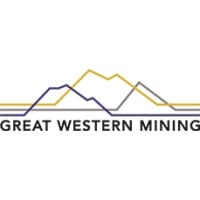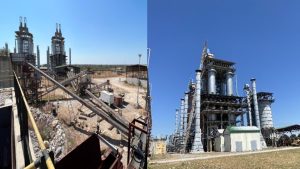As spring sampling wraps up on the Crowne Pointe granite, West Huntoon’s bare slopes are beginning to whisper tales of an expansive mineral system lurking beneath the surface. For explorers accustomed to isolated veins and modest footprints, the latest assays have introduced a new sense of scale, and a fresh line of inquiry into what lies deeper under Nevada’s arid sweep.
Great Western Mining’s field teams kicked off the season by targeting the newly recognised granite intrusion at West Huntoon, a feature first brought to light late in 2023. Initial surface chips hinted at silver-rich shoots, but follow-up work this spring has uncovered grades that rival some of the district’s best historical finds. A sample peeled from the southern edge of the granite returned just over one gram of gold per tonne alongside a staggering 455 grams of silver, stretching what was once a compact anomaly into an 80-metre trend. That continuity, discernible over successive samples, speaks to more than a series of stray pockets, it suggests a coherent, high-grade vein corridor snaking through the granite’s softer margins.
Heading north, where prior surveys had gone quiet, a first strike yielded 2.16 grams of gold and more than a kilogram of copper per tonne (1.58%), coupled with 34 grams of silver. It was a reminder that the Crowne Pointe granite does not reserve its best hauls for a single zone. Instead, precious and base metals appear co-existing at multiple points, hinting at a broader porphyry system with peripheral veins that could translate into both bulk tonnage copper and selective precious-metal targets.
Yet the story does not end at the granite’s edge. Beyond its weathered dome, grab samples have painted a picture of polymetallic potential across the surrounding host rocks. Traces of copper oxide and sulphide veins returned grades up to 0.44 % copper with over six grams of silver, while nearby breccia zones delivered more than 6 % zinc alongside elevated lead and silver values. Such diversity in mineralogy underscores a complex hydrothermal network, one capable of depositing multiple commodities across structural conduits that remain largely untested at depth.
These surface revelations have reshaped the company’s forthcoming drill campaign. Rather than a single shallow hole to confirm existing anomalies, the team is now planning a multi-hole programme designed to penetrate both the granite core and the adjacent sedimentary cover. By targeting chargeability highs identified in recent induced-polarisation surveys, the aim is to trace sulphide zones that may lie hidden beneath alluvial veneers. Success here would not only validate the surface footprint but also point to bulk-tonnage potential far beyond finger-width veins.
Investors should note that such a strategy balances risk across multiple fronts. The precious-metal intercepts offer upside in gold and silver markets, while the copper-rich porphyry remains aligned with longer-term demand for base metals. Early surface indications of zinc, lead and even molybdenum further diversify the commodity mix, cushioning the project against single-metal swings. In a sector often polarised between gold-only plays and bulk-tonnage copper developers, West Huntoon is carving out a hybrid niche that could appeal to a broad spectrum of stakeholders.
Support for the fieldwork has come via a collaboration with the Camborne School of Mines, whose geochemical and geological oversight lends academic rigour to sample interpretation. That partnership not only enhances technical credibility but may also smooth future permit approvals as regulators witness robust, science-backed exploration methods. Meanwhile, Great Western’s nimble on-theground structure – with local offices in Reno and a compact corporate team in Dublin, allows rapid decision-making as assays roll in.
Share price reaction to the news has been muted but positive, reflecting the market’s tendency to reward interpreted potential over modest surface numbers. With only a handful of assays released so far, the coming weeks promise a steady drip of newsflow as more samples reach the lab. Each result will either expand the known system or refine drill targets, offering catalysts that could sustain investor interest through the summer drilling phase.
Looking ahead, the company’s broader Huntoon Copper Project, of which West Huntoon is just one component, spans multiple claims across Mineral County. Historical drilling at the nearby M2 zone has already defined an inferred copper resource, but connectivity between M2 and West Huntoon remains untested. Should upcoming holes intercept sulphide corridors under the valley floor, the combined footprint could transform into a multi-kilometre porphyry belt. That scale would mark a step-change from discrete prospecting to district-level potential.
While drilling always carries exploration risk, the polymetallic nature of West Huntoon offers multiple value levers. High-grade gold-silver veins could feed early pay shoots, even as deeper, disseminated copper supports long-life bulk mining. Zinc and lead by-products may enhance project economics, especially if processed through modular sulphide circuits. Taken together, West Huntoon has the makings of a multi-commodity campaign that aligns well with diversified investment mandates and thematic exposure to energy transition metals.
Great Western Mining has transformed a modest granite outcrop into a promising polymetallic playground through targeted sampling and savvy geological modelling. The true test will arrive underground, but surface footprints and geophysical anomalies have already carved a compelling narrative for investors willing to lean into Nevada’s Walker Lane tale.
Great Western Mining Corporation Plc (LON:GWMO) is a mineral exploration and development company, incorporated in Ireland with operations in the USA.










































